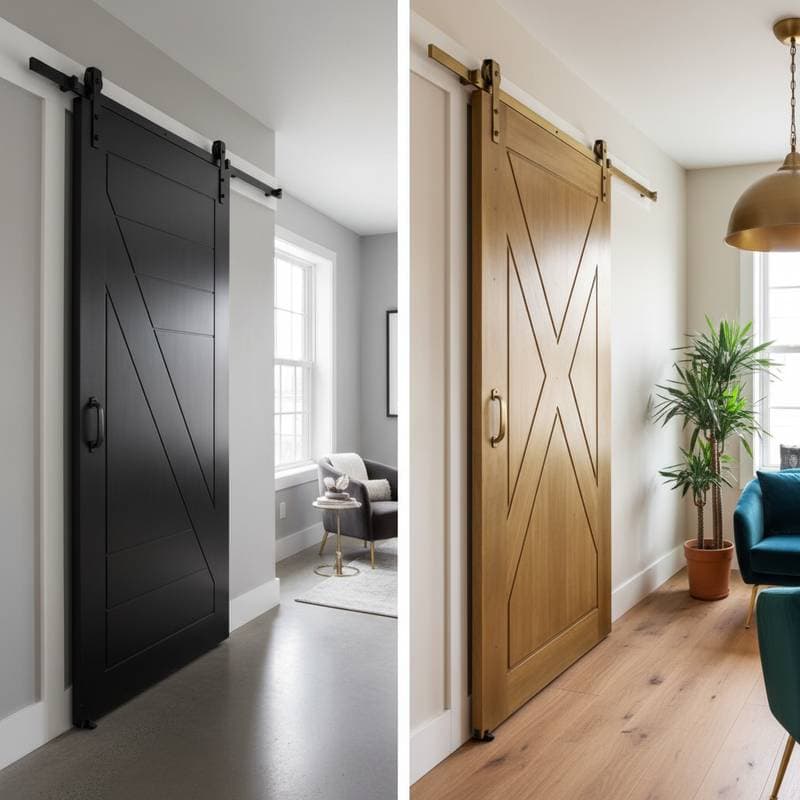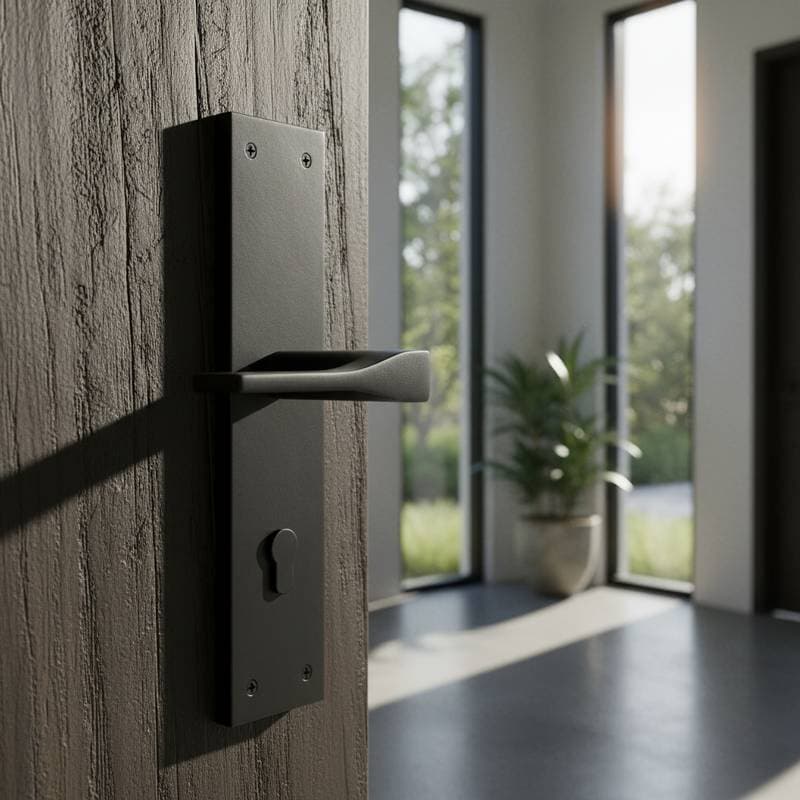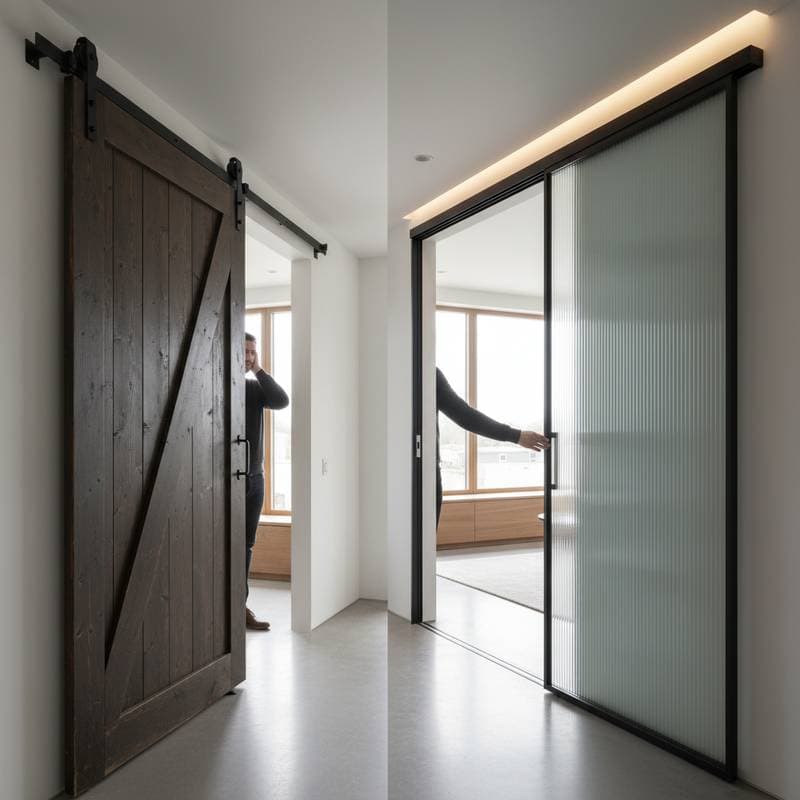Designers Abandon Barn Doors: Hardware Failures in 2025
Barn doors gained widespread appeal over the last ten years, serving as a staple in modern farmhouse and industrial interior designs. These doors provided space-efficient solutions alongside a rustic charm that aligned with prevailing remodeling styles. However, numerous designers now steer clear of barn doors due to hardware durability problems, privacy limitations, and evolving aesthetic tastes. For those planning interior door updates, examining contemporary options that ensure reliable performance and enduring benefits proves essential.
Reasons Barn Door Hardware Falls Short
Homeowners frequently encounter hardware degradation and misalignment in barn door installations. Sliding tracks and rollers tend to loosen or jam during regular operation, particularly on walls with imperfections or in structures with aged framing. Premium kits, despite their initial promise, often develop rattles, scrapes, or sags as time progresses.
Jessica Nolan, a residential designer based in Chicago, observes, “Barn doors look great on day one, but the hardware can start squeaking and shifting within months. Clients are surprised by how much upkeep is needed to keep them gliding smoothly.”
Such failures arise primarily from uneven weight distribution. The door suspends entirely from one track, placing significant stress on bolts, anchors, and brackets. Inadequate securing leads to detachment from drywall or trim, with repair expenses approaching those of a complete reinstallation.
Expenses Associated with Barn Door Maintenance
Individuals installing barn doors often overlook the ongoing demands of upkeep. Tasks like track realignment or roller substitution appear straightforward, yet labor and material fees accumulate rapidly.
| Service | Typical Cost | What It Includes |
|---|---|---|
| Track Realignment | $150 to $300 | Adjusting brackets, re-leveling door |
| Roller Replacement | $100 to $250 | New rollers, hardware lubrication |
| Wall Reinforcement | $200 to $400 | Adding blocking or stronger anchors |
| Full Hardware Replacement | $300 to $600 | New track, rollers, and mounting accessories |
A comprehensive barn door assembly, encompassing the door and hardware, ranges from $800 to $2,500. Including recurring repairs every few years elevates total ownership costs above those of many hinged or pocket door configurations.
Challenges with Privacy and Noise
While barn doors enhance visual appeal, they seldom deliver complete seclusion. Gaps along the wall and door edges permit light and sound leakage, rendering them unsuitable for spaces like bedrooms, bathrooms, or offices that require silence and isolation.
In contrast to conventional swinging doors that fit snugly into jambs, barn doors remain slightly detached from the wall. Additions such as weather-stripping or soft-close features fail to match the soundproofing of standard doors.
Those who fit barn doors in bathrooms frequently express regret. One contractor notes, “They look beautiful on Pinterest, but nobody wants a bathroom door that does not close tightly.”
Evolving Trends in Interior Design
Design preferences in interiors shift periodically. Elements that once epitomized modern rustic aesthetics now yield to streamlined profiles and subtle hardware integrations. Homeowners increasingly favor door mechanisms that integrate seamlessly with architectural elements rather than dominating as focal points.
Options like white oak slab doors, flush pocket doors, and hidden pivot systems see rising adoption. These choices facilitate effortless movement, superior noise reduction, and refined visuals. Professionals indicate their versatility across styles, including transitional and contemporary settings.
Contemporary Door Solutions
For those who appreciate sliding functionality yet seek greater dependability, several advanced alternatives merit attention.
| Door Type | Cost Range (Installed) | Key Benefits |
|---|---|---|
| Pocket Door | $800 to $2,000 | Concealed within wall cavity, suitable for compact areas |
| Bypass Sliding Door | $700 to $1,800 | Paired doors that pass each other, perfect for closets |
| Pivot Door | $1,000 to $3,000 | Striking design, fluid motion, contemporary vibe |
| Hinged Interior Door | $200 to $900 | Timeless style, dependable components, optimal privacy |
Pocket doors gain traction in bathrooms and home offices. They preserve floor area and present a neater profile compared to visible barn door tracks. Current pocket door assemblies incorporate soft-close technology and ball-bearing rollers for extended durability and reduced noise.
Pivot doors offer a luxurious impression without the rustic connotations of barn setups. Hardware attaches at the top and bottom, balancing weight uniformly to prevent sagging.
Key Factors in Installation and Construction
Prior to substituting a barn door, inspect the wall framework and current framing. Barn systems typically mount to drywall via exposed brackets. Transitioning to a pocket door necessitates wall alterations to form an internal pocket, which may require drywall removal and electrical adjustments.
For a less invasive change, upgrading to a bypass or pivot system demands few structural modifications. Professional installation generally spans one to two days, influenced by wall integrity and door mass.
Engage a skilled installer to assess compatibility with your home's build and privacy requirements. Confirm that door and hardware specifications align with materials, particularly solid wood or glass elements.
Guidelines for Upkeep
Advanced door mechanisms demand minimal routine care compared to conventional barn tracks. Select components featuring sealed ball-bearing rollers, rust-resistant coatings, and automatic-closing rails. For hinged varieties, inspect hinges and latches annually.
In pocket or sliding setups, maintain clean tracks and apply silicone spray lubrication periodically. Regular wiping prolongs component longevity and avoids binding. Steer clear of oil-based products, which draw dust and accelerate roller deterioration.
Upgrading for Enhanced Performance
Should your barn door exhibit rattling, scraping, or drooping, consider a replacement. Current options provide comparable space efficiency with reduced upkeep demands.
During remodel planning, evaluate door functionality alongside appearance. Selecting appropriate hardware attuned to your space layout averts substantial future expenses and fosters a serene, unified home environment.
Quality-focused choices in door systems yield seamless operation, polished design, and sustained advantages over extended periods.






